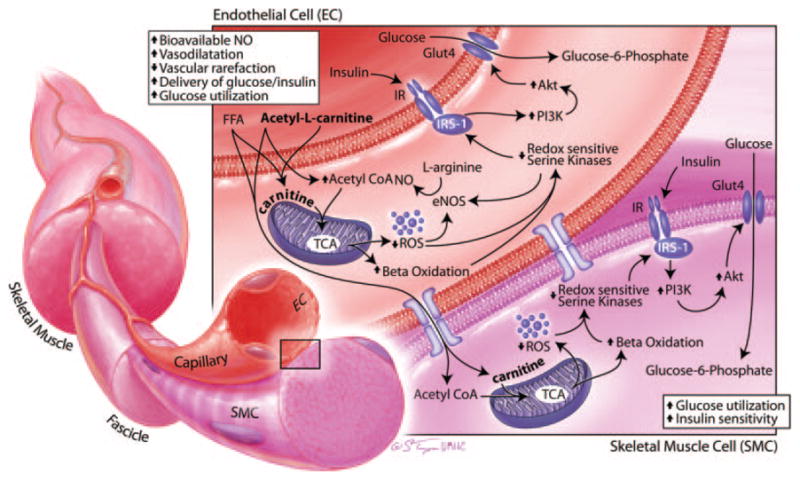Figure.

Potential actions of acetyl-L-carnitine on endothelial cell (EC) and skeletal muscle cell (SMC) insulin metabolic signaling. The product of metabolism of acetyl-L-carnitine, L-carnitine, serves as an obligatory cofactor for mitochondrial β-fatty acid oxidation to facilitate the transport of long-chain fatty acids across the mitochondrial membrane, thus resulting in more efficient mitochondrial oxidative phosphorylation and glucose use. This improves mitochondrial function, also improves both EC and SMC insulin-stimulated NO bioavailability and glucose use, and ultimately improves endothelial function and systemic insulin sensitivity. Akt indicates protein kinase B; eNOS, endothelial NO synthase; FFA, free fatty acids; GLUT4, glucose transporter 4; IR, insulin receptor; IRS-1, insulin resistance substrate 1; PI3-K, phosphoinositol 3-kinase; ROS, reactive oxygen species; TCA, tricarboxylic acid.
